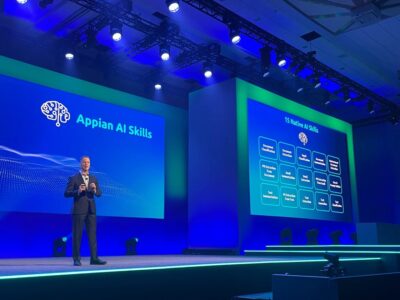
This guest post is a part of Racial Equity Month of Technical.ly's editorial calendar.
Current events have offered us all much food for thought around race — and the restrictions on travel and interactions have left many of us with a lot of time for reflection. More than ever, I find myself thinking about the intersectional nature of my work as an advocate for women in technology. I was planning to sit down to write a piece about working in technology as a person of color, but I find that I can’t separate it from my experience of being a woman — a woman of color in a field full of men.
I could write a piece about my experiences in the workplace and about how many times I’ve been discounted as an expert in the room, either because of my race or my gender. I could tell you about how few examples there are of people who look like me in the office. I could also tell you multiple stories of how I was passed over for a promotion, and how each time, I’ve wondered why my qualifications weren’t enough. Is it because I’m black? Is it because I’m mixed? Is it because I’m a woman? I’ll probably never know. I could tell you all of these stories and more. Sadly, I don’t have to write about these things, because MANY other people have, and are, writing about this.
The default response to these stories seems to be to talk about “diversity.” We talk a lot about “diversity” in technology organizations. Diversity is very important, but it generally revolves around who is hired. Typical questions like: Is our workforce diverse? Do we have people from X group and Y group? Have we achieved our hiring goals? This is where the focus lies. What *I* want to know is: Once people are hired, are these diverse kinds of people — these employees — part of the community of the organization?
It’s not enough to hire a diverse staff. Organizations need to ask: “Do we care about the whole person? Are we considering each person as a whole person?”
We should be asking about how many people of X group have we hired, but in addition:
- Are these diverse employees valued?
- Are they respected?
- Are they encouraged to participate in the organization?
Does everyone have a voice? Does each and every person feel like they have a part to play in the organization? Are employees encouraged to offer something to develop the community? Does the community provide something back to the employees? If the answer is no, or the employees don’t know the answer, we’ve missed out on the most important part of building our organizations — building an inclusive organizational community.
“In inclusive environments, individuals are appreciated for their unique characteristics and therefore feel comfortable sharing their points of view and other aspects of their true and authentic self,” a Gallup article says.
Until our communities of work are places where people feel that they have a voice and that they are encouraged to bring their whole selves to work, we won’t, and more importantly, can’t be truly inclusive. The Opportunity Agenda has a great set of tips for creating inclusive work communities through intersectionality.
I particularly felt a connection to tip number 8, collaboration: “Strive to collaborate with people and/or provide resources for people from different communities, issue areas, and sectors to promote transformative change.” I’ve spoken with a number of women over the last year, about various topics related to women in technology, and how to create a change in how we exist in the world of technology. We have seen the communities grow, and the acceptance of women in technology increase, but it seems like there is so much work yet to be done. I would love to see:
- More intentional, intersectional collaborations between the various women in tech groups in the DC Metro area
- Ongoing conversations between leadership of these organizations to discuss how we are similar, and how we can invest equally in each other’s issues
- More women of color in leadership positions in technology organizations — private AND public
“Intersectionality should encourage cross-community, cross-sector and cross-issue collaborations, investing equally in each others’ issues, narrative goals and policy agendas,” according to The Opportunity Agenda.
If you’re with me, join me. Tell your staff how much you value you them, particularly your female employees and employees of color. Let them know how you and your organization are promoting intersectionality and community collaboration. And, if you are the leader of an intersectional technology group in the DC Metro area (or beyond) please contact me and join the collective.
Join the conversation!
Find news, events, jobs and people who share your interests on Technical.ly's open community Slack

DC daily roundup: Esports at Maryland rec center; High schoolers' brain algorithm; Power data centers with coal?

DC daily roundup: Tyto Athene's cross-DMV deal; Spirit owner sells to Accenture; meet 2GI's new cohort

DC daily roundup: $10M to streamline govt. contracting; life sciences might dethrone software; Acadia's new $50M


